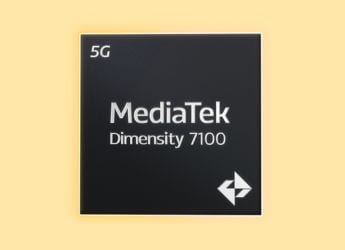- Home
- Cryptocurrency
- Cryptocurrency News
- YouTube Ready for Web3 Move, Plans Foray into NFTs and Metaverse Despite Aiming to Go Carbon Free
YouTube Ready for Web3 Move, Plans Foray into NFTs and Metaverse Despite Aiming to Go Carbon-Free
YouTube looks to form deeper connections between artists and their audiences via Web3 elements like NFTs.
Photo Credit: Reuters
YouTube intends to let people "own" creator content in the form of a digital collectible, or an NFT
YouTube is all geared up to hop on the Web3 bandwagon and integrate elements such as non-fungible tokens (NFTs) and the metaverse into its platform, that is reportedly used by over two billion people worldwide. Web3, which will largely be supported by the blockchain technology, is considered the Internet of the future with cryptocurrencies, NFTs, and the metaverse being distinct facilitations it brings along.
Connecting artists with their audiences on a deeper level is one of the main reasons why YouTube wishes to adapt to the emerging world of Web3 and its elements, Neil Mohan, Chief Product Officer, YouTube wrote in a blog post released on February 10.
“Together, they'll be able to collaborate on new projects and make money in ways not previously possible. For example, giving a verifiable way for fans to own unique videos, photos, art, and even experiences from their favourite creators could be a compelling prospect for creators and their audiences,” Mohan said in the post.
YouTube intends to let people “own” creator content in the form of a digital collectible, or as it's termed, an NFT. It is however noteworthy that, NFTs do not transfer the copyrights of the content to its buyer.
As part of its roadmap for this year, YouTube is also working to make gaming a more interactive experience with metaverse integration. A fully functional virtual universe, that is the concept of metaverse, where people will be able to interact with digital beings as virtual avatars.
“We're thinking big about how to make viewing more immersive. The first area in which you can expect to see an impact is gaming, where we'll work to bring more interactions to games and make them feel more alive. We're excited to see how we can turn these virtual worlds into a reality for viewers,” Mohan added.
While tech developments are coming easy to the social media giant, YouTube's integration with the Web3 world is staring eye-to-eye with related issues.
The environmental concerns linked to NFT minting are against Google's ambition to go “carbon free” by 2030.
“We are the first major company to make a commitment to operate on 24/7 carbon-free energy in all our data centres and campuses worldwide. We're working to get this done by 2030,” Google CEO Sundar Pichai had said in 2020.
As per a recent report by Poster Grind, a series of transactions emanating from a single NFT can consume a whopping 340kWh of energy. Poster Grind is a group of artists, designers, NFT creators, and art directors.
With NFT sales crossing $25 billion (roughly Rs. 1,84,700 crore) in 2021, the carbon emissions linked to the sector are bound to be high.
YouTube is also seeing some backlash on social media from creators who wish their content not be tokenised for sale in the first place.
So YouTube, without my permission, is now selling my content as an NFT? Surprisingly, this isn't clarified, all it states is that 'fans can own creators' videos.'
— Optimus ⛩ (@SubToOptimus) February 10, 2022
I don't want people owning shit that I made as an NFT. It's MY content. IF this is the case, YouTube can go fuck off https://t.co/oqPZToArmv
If YouTube implements NFT's and claims viewers will gain "ownership" of those videos it's going to lead to so many false copyright take downs...
— Mischief (@MischiefsYT) February 10, 2022
“There's a lot to consider in making sure we approach these new technologies responsibly, but we think there's incredible potential as well,” Mohan has noted in his blog post.
Meanwhile, Google is watching the blockchain space, Pichai had revealed earlier this month, calling it “an interesting and powerful technology with broad applications.”
Catch the latest from the Consumer Electronics Show on Gadgets 360, at our CES 2026 hub.
Related Stories
- Samsung Galaxy Unpacked 2025
- ChatGPT
- Redmi Note 14 Pro+
- iPhone 16
- Apple Vision Pro
- Oneplus 12
- OnePlus Nord CE 3 Lite 5G
- iPhone 13
- Xiaomi 14 Pro
- Oppo Find N3
- Tecno Spark Go (2023)
- Realme V30
- Best Phones Under 25000
- Samsung Galaxy S24 Series
- Cryptocurrency
- iQoo 12
- Samsung Galaxy S24 Ultra
- Giottus
- Samsung Galaxy Z Flip 5
- Apple 'Scary Fast'
- Housefull 5
- GoPro Hero 12 Black Review
- Invincible Season 2
- JioGlass
- HD Ready TV
- Laptop Under 50000
- Smartwatch Under 10000
- Latest Mobile Phones
- Compare Phones
- OPPO Reno 15 Pro Max
- Honor Win RT
- Honor Win
- Xiaomi 17 Ultra Leica Edition
- Xiaomi 17 Ultra
- Huawei Nova 15
- Huawei Nova 15 Pro
- Huawei Nova 15 Ultra
- Asus ProArt P16
- MacBook Pro 14-inch (M5, 2025)
- OPPO Pad Air 5
- Huawei MatePad 11.5 (2026)
- Xiaomi Watch 5
- Huawei Watch 10th Anniversary Edition
- Acerpure Nitro Z Series 100-inch QLED TV
- Samsung 43 Inch LED Ultra HD (4K) Smart TV (UA43UE81AFULXL)
- Asus ROG Ally
- Nintendo Switch Lite
- Haier 1.6 Ton 5 Star Inverter Split AC (HSU19G-MZAID5BN-INV)
- Haier 1.6 Ton 5 Star Inverter Split AC (HSU19G-MZAIM5BN-INV)

















